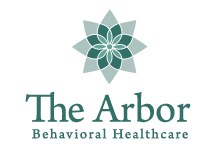There is no question that as you search to find the right addiction treatment program that choice can quickly become overwhelming. It is important to make sure the program is a good match for you or your loved one. However, not all programs are equal. Here are ten specific attributes that define an excellent rehab program that you should seek.
1. A clinical director with at least a master’s degree
It is not uncommon to find addiction treatment programs run by sober people who do not possess an advanced degree in the behavioral sciences. However, more often than not, these programs offer treatments that are not evidence-based. Evidence-based treatments are well-researched for effectiveness. Your best odds of finding a program that consists of multiple, evidence-based treatment modalities exist in facilities run by an addiction treatment expert with a master’s or doctorate. In addition to a well-educated executive team, a top inpatient drug and alcohol rehab program should have a medical doctor on staff. Successful addiction treatment takes a holistic approach that takes into consideration the overall health of the individual. An MD is responsible for the physical health of the person as well as administration of any prescriptions patients require.
2. Frequent Individual and group counseling sessions
All inpatient and outpatient treatment programs should include frequent one-on-one counseling sessions for participants. Ideally one-on-one sessions occur a minimum of once a week, more often if required by the individual. The counselor will use one or more behavioral therapies to help the individual uncover behaviors that are unhealthy and counterproductive to good, sober life. Together the therapist and client work to develop new strategies for coping with feelings and prevent negative behaviors. Counseling is provided by trained addiction experts including psychiatrists, psychologists, social workers, and counselors. Addicts often struggle with relationships. Group therapy serves to bring people together, often forming relationships that allow participants to support each other in recovery. The isolation that an addict feels is reduced when they are part of a group of peers. Some build lifelong bonds with other group members. Group sessions also bring a wide range of experiences and perspective to the entire group. Member input can add a perspective that the individual is too close to see. Participation in a group adds a layer of accountability, helping each member remain sober.
3. Treatment for co-occurring mental and substance use disorders
It is incredibly common for those suffering from addiction disorders to also suffer from mental illness. How common? A study done in 2010 estimated that 9.2 million Americans suffer from co-occurring mental health and addiction disorders. This same study suggests that about 45% of those seeking treatment for an alcohol or drug addiction also have a co-occurring mental health disorder. The National Alliance on Mental Illness (NAMI) reports that about a third of people who have a mental illness deal with addiction issues. Given these high odds of suffering from a dual diagnosis, it is very important that a top inpatient addiction treatment program be equipped to treat co-occurring disorders. SAMHSA supports an integrated approach to treatment for said individuals. To best treat people with a dual diagnosis, the program requires close integration between a psychiatrist, medical staff, and the addiction treatment plan. The treatment plan must be personalized to meet the specific needs and goals of the client. The advantages of an integrated treatment approach to the individual are clear. Dual diagnosis treatment is associated with better outcomes including:
- Improved quality of life
- Reduced substance use
- Decreased hospitalizations
- Improved psychiatric symptoms
- Increased housing stability
- Fewer arrests
4. Long-term approach
Research has documented that recovery rates improve dramatically when a long-term treatment plan is in place. The concept of a 30-day program exists to accommodate insurance companies, not those in need of addiction treatment. The National Institute on Drug Abuse (NIDA) recommends residential or outpatient programs consist of a minimum of 90 days. Individuals often benefit from a stepped-down approach that begins with either inpatient or intensive outpatient care. Depending on their personal needs, the person may then enter extended care or a sober living program. Many benefit from participation in a relapse prevention program that provides a level of accountability and support, not offered by 12-step meeting programs. Of course, the client may benefit from regular attendance in a 12-step group throughout their lifetime. The best addiction treatment programs offer all of these support programs under one clinical treatment team as part of an individualized treatment plan.
5. Evidence-based therapies
Many types of therapies are used to treat substance addictions and mental disorders. The best programs offer programs that use evidenced-based treatment modalities. What this means is that the specific form of treatment used has been well-researched for effectiveness. SAMSA (Substance Abuse and Mental Health Services Administration) defines Evidence-based programs as, “programs that have been shown to have positive outcomes through high-quality research.” When researching a treatment program, in addition to asking what types of therapies are offered, you want to know that their use is based on research.
6. Nutritionally focused
There is greater value to the food served in a treatment facility than just good taste. An excellent rehab program includes a Medical Nutritional Therapy (MNT) plan. Addiction harms the body and the brain and weakens the immune system. Thus a therapeutically designed nutritional plan is an important part of treatment. MNT is designed to:
- nourish and heal the body
- reduce stress and help to stabilize the person’s mood,
- minimize cravings for alcohol and drugs,
- work towards healing or reversing medical conditions that are either co-occurring or the result of substance abuse, and
- educate the individual about nutrition and self-care.
Addiction often goes hand-in-hand with a poor diet. This can leave the person underweight, overweight, or with bad skin. Good nutrition can reverse these conditions and improve physical appearance. This can help boost self-confidence and self-esteem.
7. Exercise
You may be surprised to find out that an evidence-based fitness program is also an important part of a rehab program. Various forms of exercise offer different benefits. Aerobic exercise, such as running, actually increases the neuron reserves in the part of the brain that is responsible for learning. In addition to increasing the ability to learn, regular exercise relieves stress and tension which makes it easier for individuals to release negative emotions. It also releases endorphins. Endorphins are nature’s “feel good” hormone and offer a natural high that is free of the negative risks of drugs. Lastly, exercise increases self-confidence and optimism, as well as lowers rates of depression and anxiety.
8. A family program
Addiction disorders impact more than the individual, the entire family suffers. Healing the family prepares the family to better support the person in recovery and sobriety. Both NIDA and the U. S. Department of Health and Human Sciences recommend the inclusion of a family therapy program as part of a substance abuse treatment plan. Among the benefits of a family program:
- Addressing codependent behavior that enables addiction and blocks recovery.
- Helping families to understand, as well as avoid enabling the behavior.
- Improving the mental state of the entire family.
- Developing an understanding of how the family can support the recovery of their loved one and help deter relapse.
- Preventing addiction from spreading to other family members or future generations.
9. Both Western and Eastern treatment modalities
Recovery is far more than a few weeks in treatment. Recovery is a lifelong process that starts with detoxification and treatment. Conventional, Western medicine marks an excellent start to recovery. However, many Eastern traditions offer excellent support for long-term success. Rehab is a great time to replace negative, old habits like sugar, sex, and drugs with healthier, new habits like exercise, yoga and meditation. Meditation is a great way to self-regulate mood. Meditation lowers stress and improves the immune system.
10. Connection-building activities among clients
Addiction is nearly impossible to beat on one’s own. If it were easy, addiction treatment centers wouldn’t need to exist. Recovery is a lifelong journey that best accomplished with help along the way. Addiction also isolates a person emotionally. Establishing strong emotional connections and bonds pave the way for a healthier life. Experts say that “the opposite of addiction isn’t sobriety, it is connection.” Participating in a group where members are equally focused on living a healthy life and developing positive habits provides a needed support system from people with the same goals and understanding. An excellent treatment program encourages and fosters camaraderie among clients.

